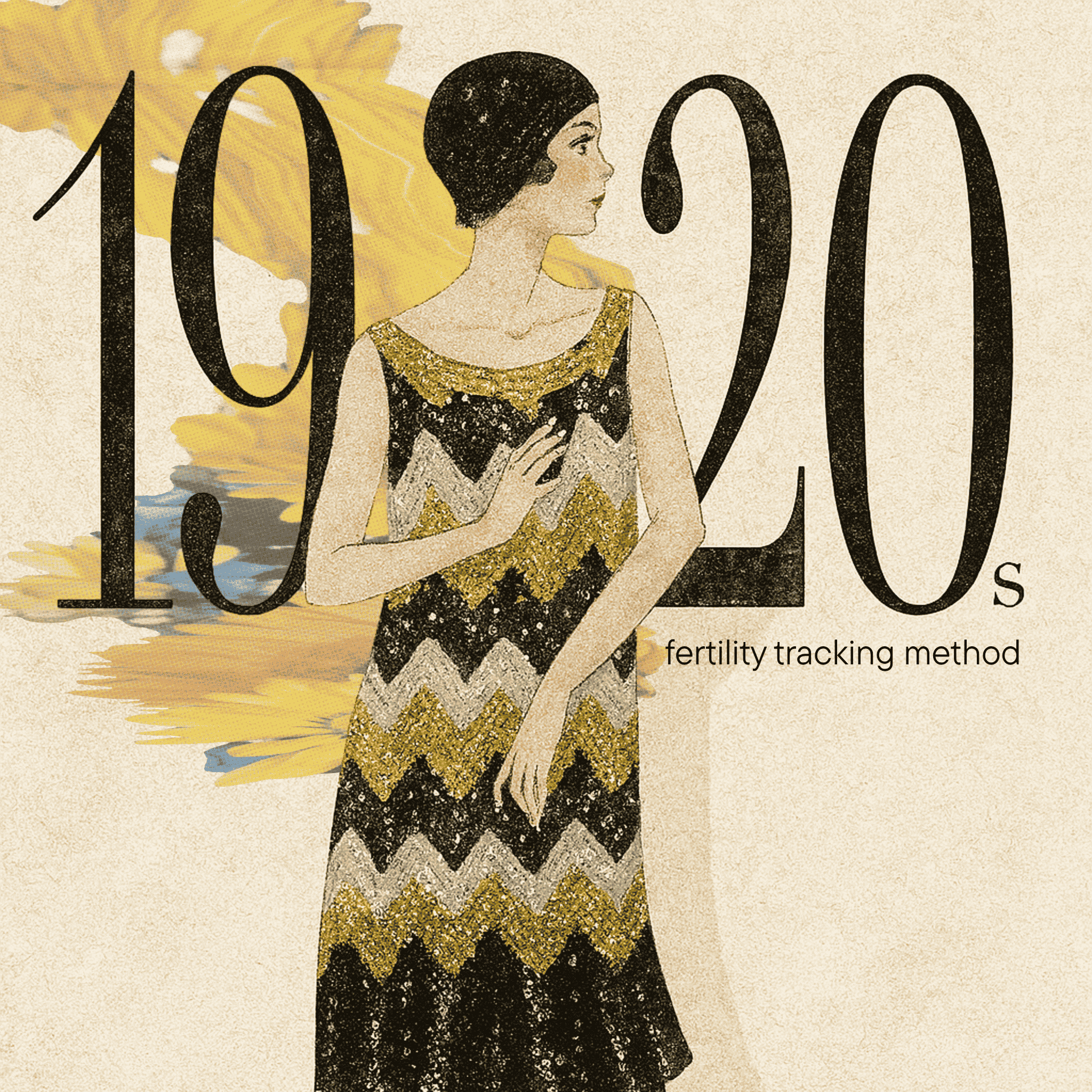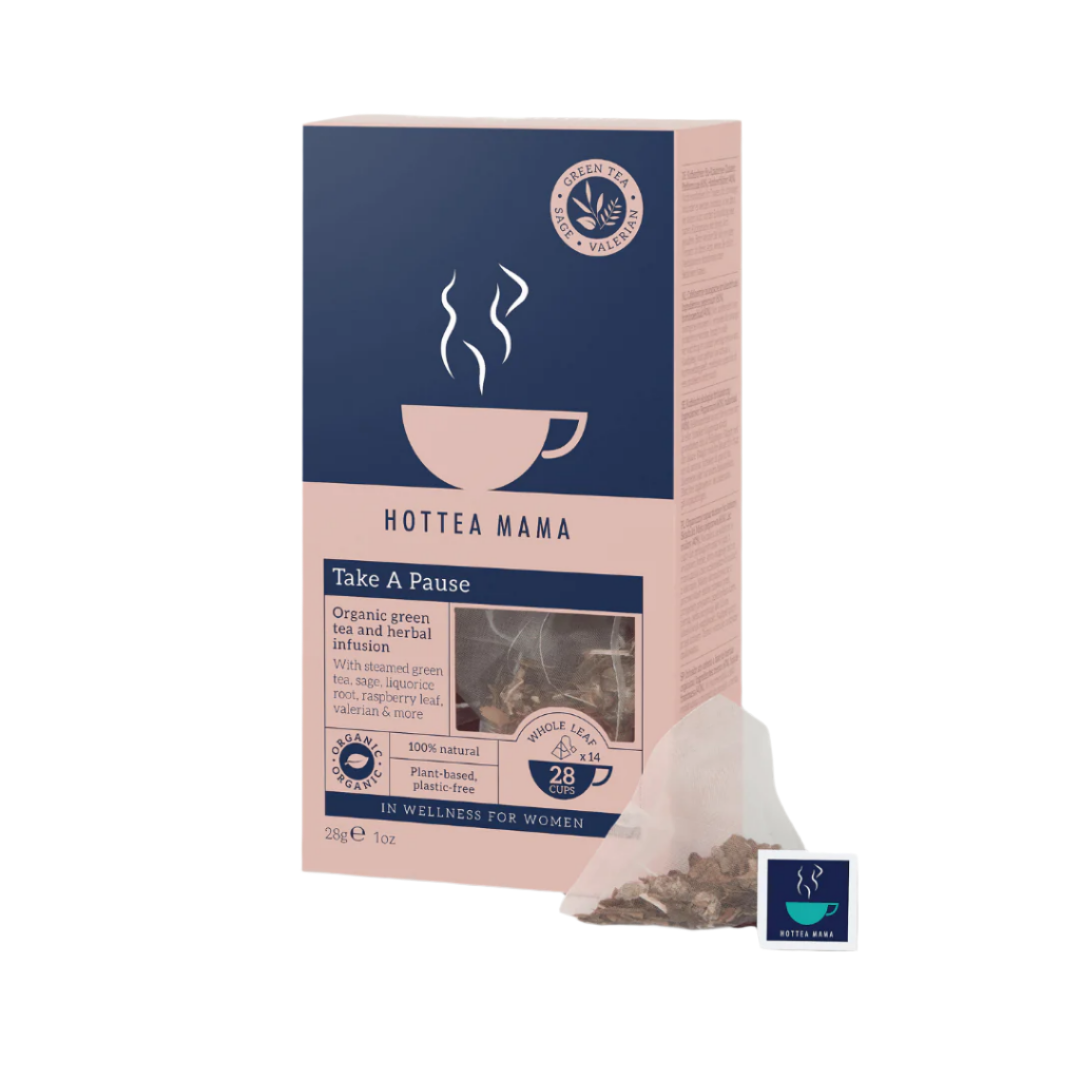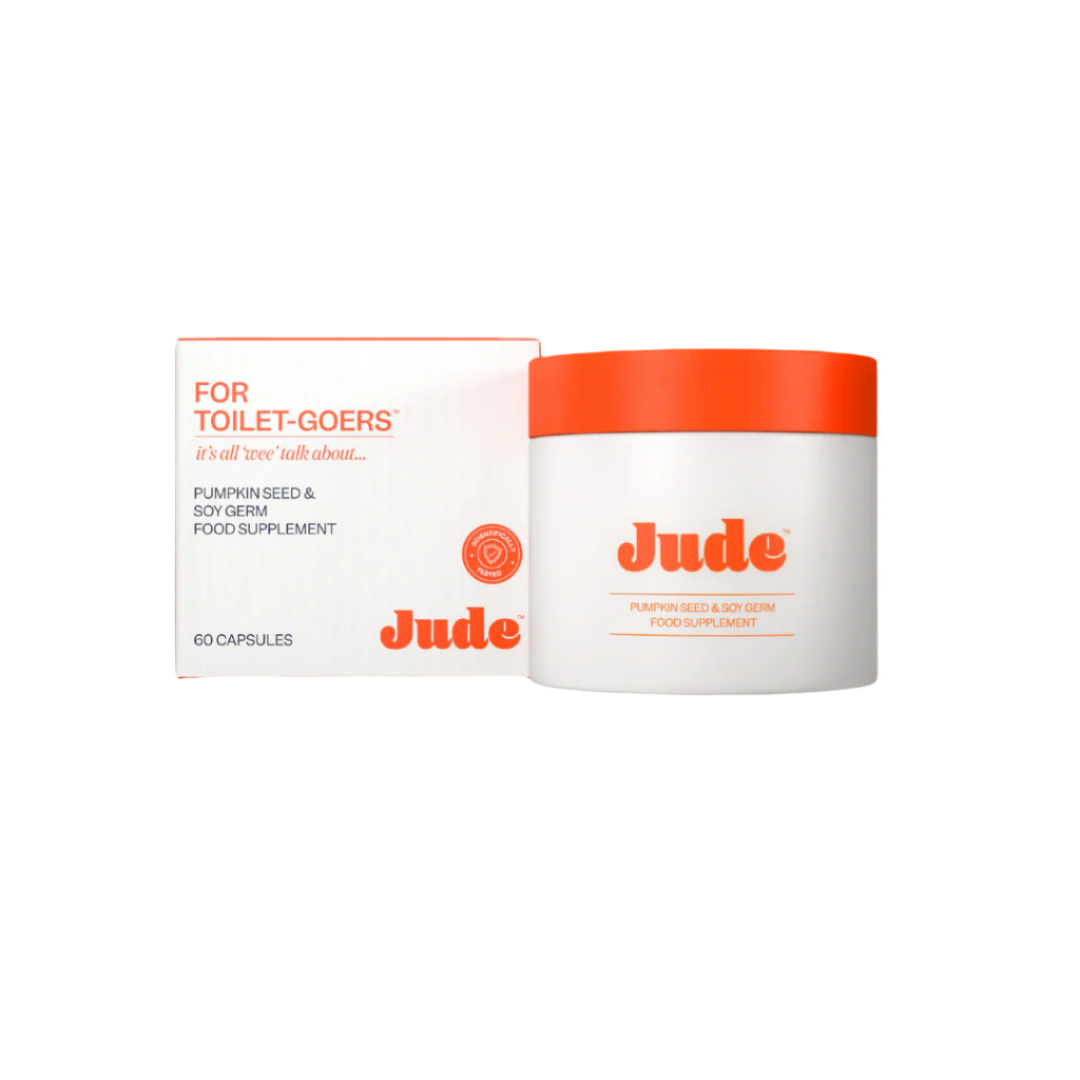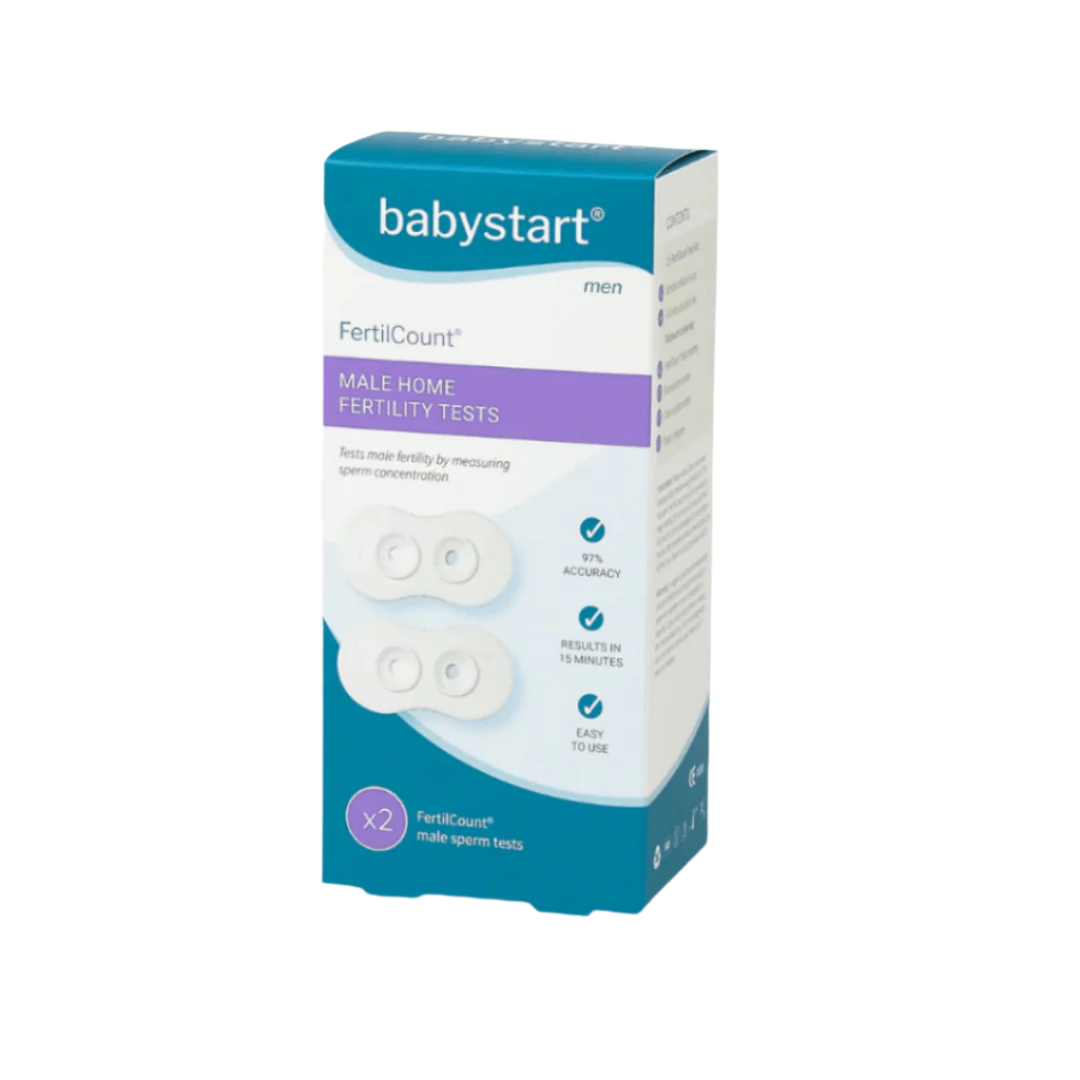It’s funny how some things in life never really change they just get better accessories. Back in the 1920s, when women wore cloche hats and jazz was the soundtrack of the city, an unlikely wellness trend was quietly beginning: Basal Body Temperature tracking. That’s right, while the rest of the world was dancing the Charleston, some women were waking up at the same time every morning, taking their temperature, and scribbling it down in careful little charts, all in aid of fertility tracking.
Fast forward a century, and here I am, in my favourite pyjamas, not a cloche in sight tracking my own BBT… except my thermometer is now a sleek little wearable called Tempdrop, syncing my fertility tracking data to my phone while I sip my oat milk latte. Technology may have changed, but the principle? It's still the same as the flapper era.
So how did we get from delicate glass thermometers to an wearable fertility tracking? Let’s take a trip back through time.

The jazz age awakening: BBT in the 1920s
The 1920s were all about liberation shorter skirts, bolder lipstick, and for some women, the first forays into self-knowledge about their cycles. Scientists had started to notice something fascinating: a woman’s body temperature subtly changes throughout her menstrual cycle. Your basal body temperature (that’s your temperature first thing in the morning, before moving or speaking) rises slightly after ovulation. And this was a huge innovation for fertility tracking.
Armed with this discovery, a few forward-thinking women began to track these changes, slowly, methodically, and without the luxury of Google searches or cycle-tracking apps. They relied on glass thermometers and handwritten charts, recording daily temperatures to understand when they were most fertile.
Imagine it: corsets might have been out, but patience and precision were still very much in fashion, and women were empowering themselves to understand fertility tracking.
1930s: The birth of charting for fertility tracking
By the 1930s, BBT tracking had a name and a following. “Charting” (AKA fertility tracking), became the term for this process, and it was considered revolutionary. For the first time, women had a tangible, scientific way to understand their bodies no mysticism required.
These charts were often works of art in themselves: neat grids, careful dots marking temperatures, little notes about mood or sleep. It was self-care decades before anyone was hashtagging it. And for many women, it was the first step toward realising that their fertility tracking didn't have to be a mystery it was a pattern.

1950s: BBT as the Gold Standard
The 1950s were an era of domestic glamour, think immaculate hair, cinched waists, and housewives baking in spotless kitchens. But beneath that polished exterior, many women were running their own little home laboratories, and fertility tracking workshops.
By this decade, BBT for fertility tracking was the go-to method for understanding fertility, long before ovulation kits or hormonal birth control existed.
If you wanted to know when you were ovulating, you didn’t pop into a pharmacy for a plastic stick to pee on. You grabbed your thermometer, jotted down your reading, and compared it to last month’s.
And here’s the thing, it worked. Thousands of women successfully used BBT to plan (or prevent) pregnancy, using nothing more than consistency and a bit of arithmetic, building their own bespoke fertility trackers in a note book!
The long road to tech-savvy tracking
Through the ‘60s, ‘70s, and ‘80s, fertility tracking using BBT kept quietly going strong. Women who wanted a natural approach swore by it. But let’s be honest, it wasn’t always glamorous.
- You had to wake up at the same time every day.
- You couldn’t move much before taking your temperature (forget about morning cuddles).
- And if you caught a cold, had a late night, or forgot to log one day well, your chart was basically toast.
Still, this method of fertility tracking persisted because it was accessible, non-invasive, and empowering. And for many, it was the first step toward a deeper connection with their own health.
Enter the digital era
The 2000s brought us smartphones, apps, and an ever-expanding collection of wellness gadgets. Cycle-tracking apps were a game changer, suddenly, those handwritten grids could be replaced by clean, colour-coded digital charts. Helping women to better visualise their fertility tracking outcomes But the thermometers? Still kind of old-school.
That’s where Tempdrop stepped in. This sleek wearable, worn overnight, automatically records your BBT while you sleep, adjusting for movement and environmental factors. In other words, no more strict wake-up times, no more morning juggling acts with a thermometer. Just effortless data that syncs right to your phone. Fertility tracking just go a lot easier.
It’s the perfect marriage of a century-old method and modern convenience.
Why the history of BBT still matters
You might be wondering, why dwell on the past when the future of fertility tracking is already here?
Because knowing the history reminds us of one simple truth: women have always sought to understand their bodies and fertility tracking plays a huge part in this. Long before pharmaceutical companies packaged fertility into neat monthly prescriptions, before algorithms predicted our ovulation days, there was curiosity, discipline, and the humble glass thermometer.
BBT tracking is not just a method for accurate fertility tracking, it’s a legacy of women taking charge of their reproductive health, even in times when society didn’t always welcome that autonomy.
From 1920s flappers to 2020s femtech queens
When I put on my Tempdrop before bed, I’m part of a lineage that stretches back to women in the 1920s, women who probably never imagined that their quiet morning ritual would one day be supported by wearable tech and cloud-based data storage, helping women all over the world with their fertility tracking.
In a world of quick fixes and instant answers, there’s something romantic about using a fertility tracking method that’s endured for a hundred years, only now, it’s paired with the convenience we’ve been dreaming about since those first handwritten charts.
Your cycle, your story
If there’s one thing history teaches us, it’s that your cycle is unique, but your challenges with fertility tracking aren’t new. Women have been there, done that, and left you a century of tips, from glass thermometers to the wonders of Tempdrop.
So maybe tonight, when you slip into bed, you’ll think of those women in the 1920s and beyond, pen in hand, fertility tracking away under a single lamplight. And maybe you’ll smile knowing that, thanks to modern tech, you can carry on their tradition without sacrificing sleep, or style.
Ready to start your own BBT journey?
If you’ve ever wanted to take control of your fertility tracking, track your cycle with precision, or simply get to know your flow better, BBT fertility tracking is the time-tested way to do it. And with Tempdrop , it’s finally as effortless as it should be.
Because your great-grandmother might have had patience, but you? You have Wi-Fi.










